Remote MCP Server: Access Your System’s Data and Trigger Scenarios
The Remote MCP (Model Context Protocol) Server is a powerful and secure solution that enables AI-powered agents—like ChatGPT, Claude, or any other MCP-compatible LLM—to communicate directly with your system’s data and even triggerThe initial event that starts a scenario. It can be an action, a scheduled time, or a custom event, and is essential to define at the beginning of each scenario. automation scenariosA specific connection between applications in which data can be transferred. Two types of scenarios: active/inactive.. Unlike local implementations, the Remote MCP Server runs on Boost.spaceA platform that centralizes and synchronizes company data from internal and external sources, offering a suite of modules and addons for project management, CRM, data visualization, and more. Has many features to optimize your workflow! infrastructure, meaning there’s no need to host or manage the server yourself.
Once connected, you can interact with your system in real time, receive structured data, run queries, and even initiate workflows—all through a natural AI chat interface.
In this guide, we’ll walk you through three simple steps to get started:
1. Connecting your AI agent to MCP
2. Chatting with your AI agent, who can now access and work with your system’s data
3. Taking action—triggering scenarios and launching automated workflows directly from the conversation
Let’s get started.
Before we dive into the individual steps, you’ll need the following:
1. MCP TokenA secure code used to authenticate and authorize access to API endpoints, enabling users to connect with third-party applications. – A secure MCP token you generate in your Boost.space instance to authenticate the communication.
2. URL – A dedicated connectionUnique, active service acces point to a network. There are different types of connections (API key, Oauth…). URL, which you’ll find in the MCP Token section after creating the token.
You’ll find out how to get your MCP token and URL in the step-by-step guide below.
Step 1: Connect MCP to Your AI Agent (Example with ChatGPT)
To show how the Remote MCP Server works, let’s walk through a practical example using OpenAI’s ChatGPT interface with MCP support.
To connect your Boost.space systemA platform that centralizes and synchronizes company data from internal and external sources, offering a suite of modules and addons for project management, CRM, data visualization, and more. Has many features to optimize your workflow! to an AI agent using the Remote MCP Server, follow this example with OpenAI’s Playground environment:
1. First, go to https://platform.openai.com/playground.
2. In the Prompts section, find the Tools column, click the plus (+) icon, and select MCP Server from the list.
3. Once you’ve added the tool, you’ll need the following:
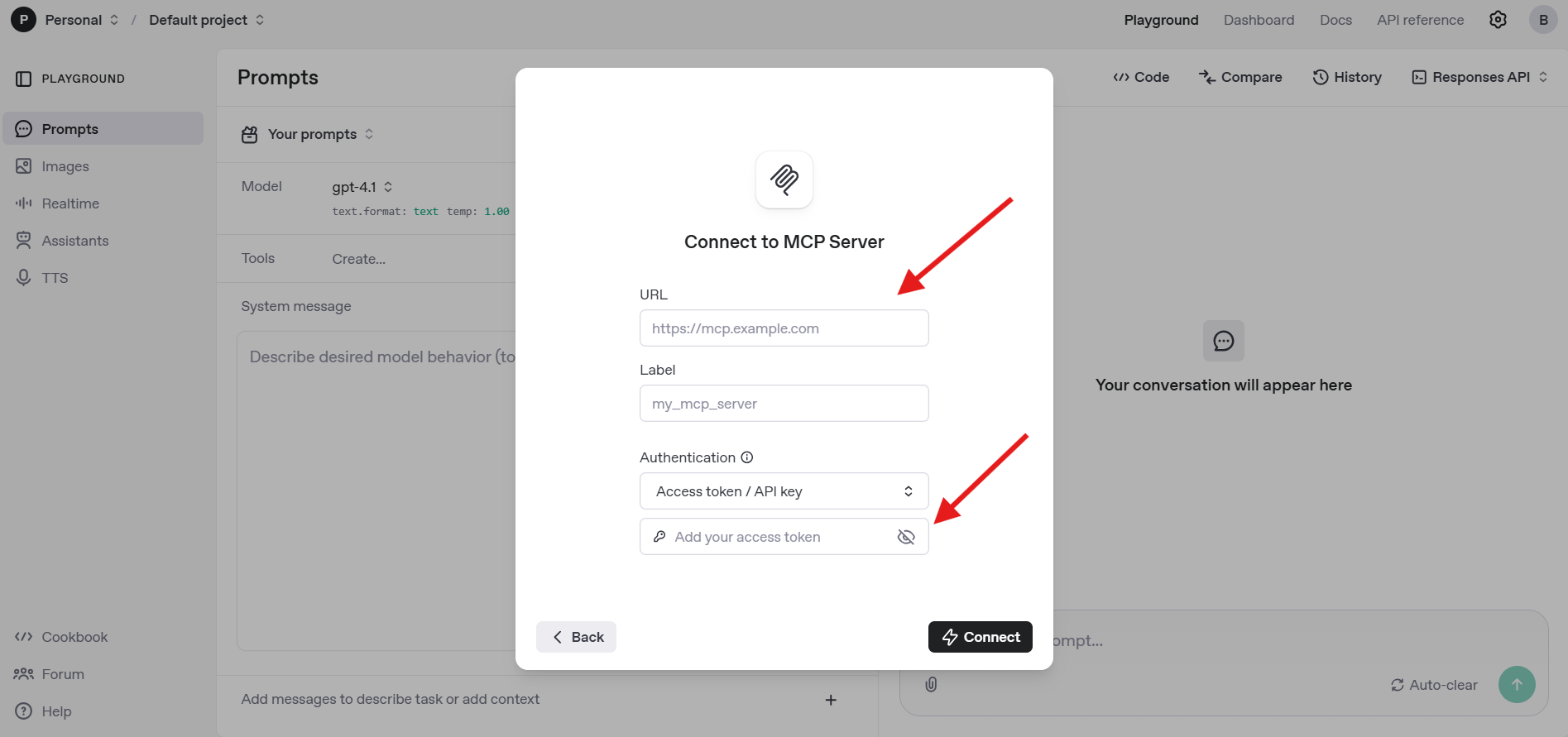
With these two components, the AI agent can access your data in a controlled and secure way. Simply paste the URL and your MCP Token into any chatbot interface that supports MCP (like OpenAI, Claude, or other tools), and start chatting with your data.
4. Tool Selection
Once the AI agent is connected using the URL and MCP token, you’ll be asked to select which tools (i.e., specific functionsFunctions you can use in Boost.space Integrator - create, update, delete, get, search. or data modulesa module is an application or tool designed to handle specific business functions, such as CRM, project management, or inventory. The system's modular architecture allows you to activate only the modules you need, enabling customization and scalability as your business requirements evolve.) the agent can use during the conversation.This step determines what the AI will be able to do—for example:
- Search and filter data from a modulea module is an application or tool designed to handle specific business functions, such as CRM, project management, or inventory. The system's modular architecture allows you to activate only the modules you need, enabling customization and scalability as your business requirements evolve.
- Retrieve contact details or invoices
- Summarize or analyze recordsIn Boost.space, a record is a single data entry within a module, like a row in a database. For example, a contact in the Contacts module or a task in the Tasks module.
- Trigger automation workflows
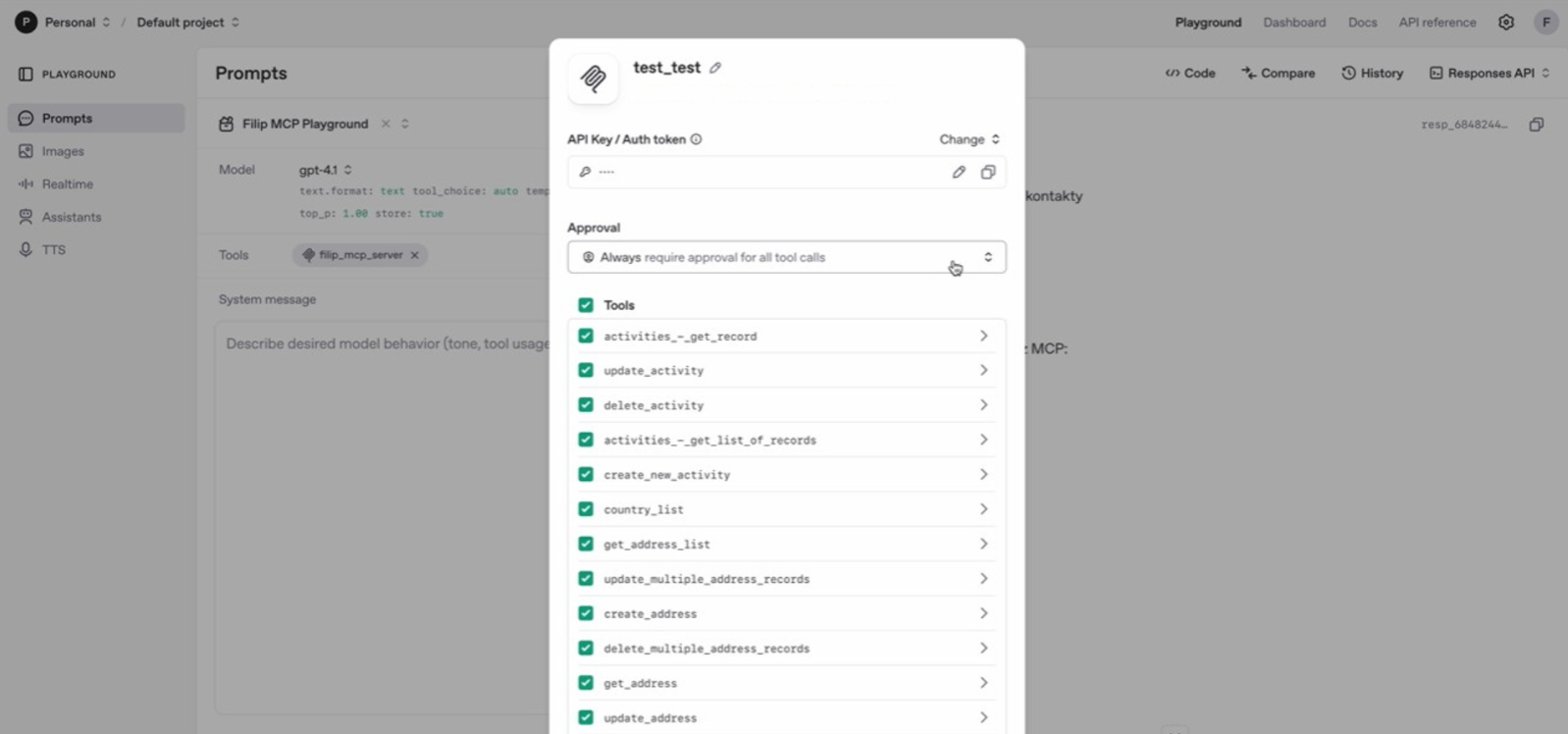
You can adjust these tools at any time to control the scope of access.
Step 2: Chat with Your AI Agent and Access System Data
Imagine you manage your sales records inside Boost.space. By connecting the Remote MCP Server to ChatGPT, you can type a question like:
“Show me all sales deals over $10,000 from the past quarter.”
The AI agent will use the MCP protocol to access your live data, filter it according to the query, and return a clean, structured answer—without writing a single line of SQL or leaving the chat window.
You can then follow up with:
“Which salesperson closed the most high-value deals?”
“Start the upsell analysis scenarioA specific connection between applications in which data can be transferred. Two types of scenarios: active/inactive..”
This transforms your AI chatbot into a fully conversational interface for working with your internal system.
Step 3: From Data to Action – Trigger Scenarios Directly from the Chat
In addition to working with data, the Remote MCP Server can also trigger scenarios—automated workflows built inside your Boost.space system.
To enable this, the scenario must be marked as “On Demand.” Only scenarios with this setting can be executed via AI chat interfaces using the MCP protocol.
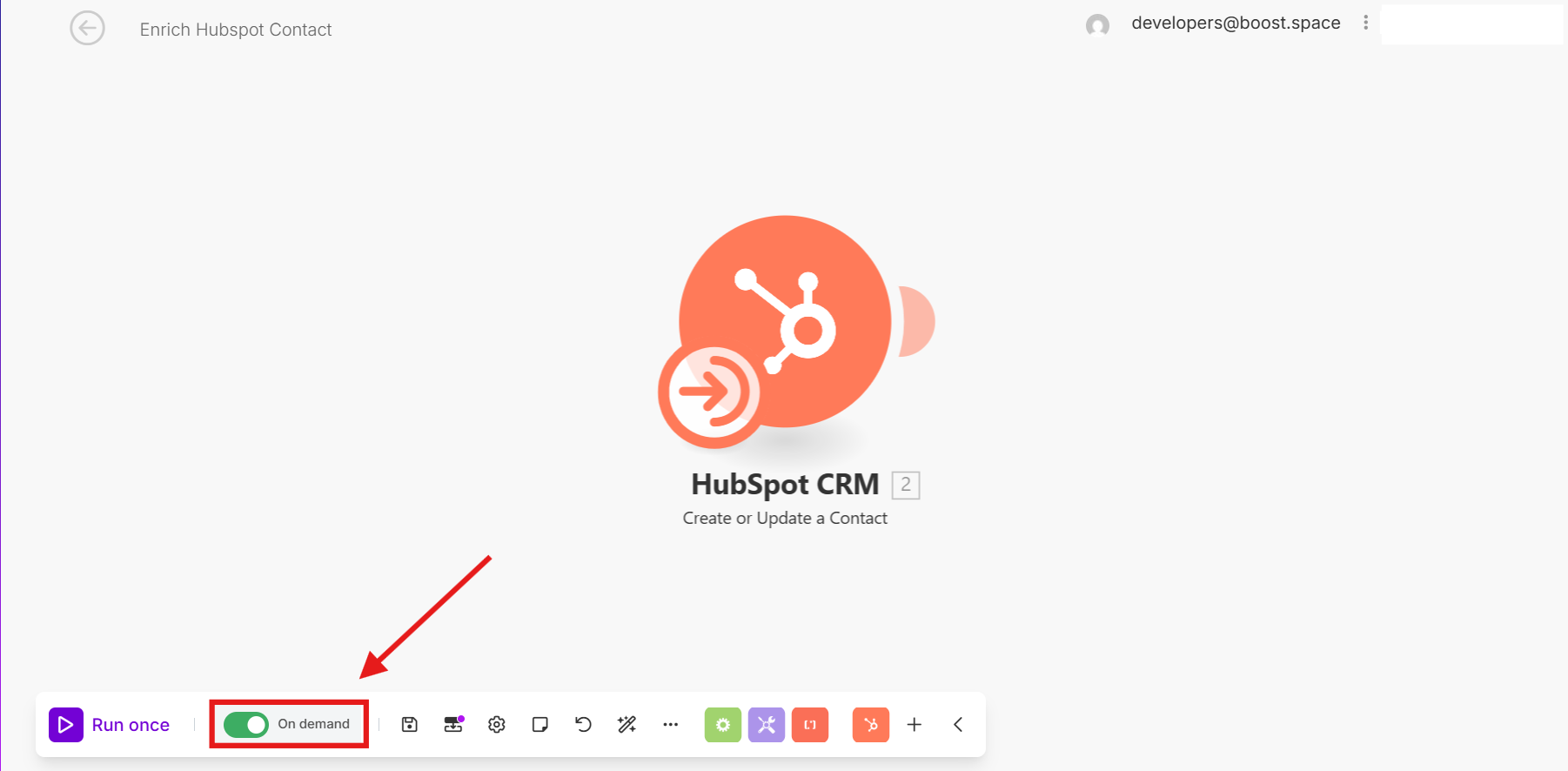
Passing Inputs into the Scenario
When triggering a scenario via MCP, the AI needs to send the correct input values into the workflow—these are defined as Scenario Inputs in the scenario builder.
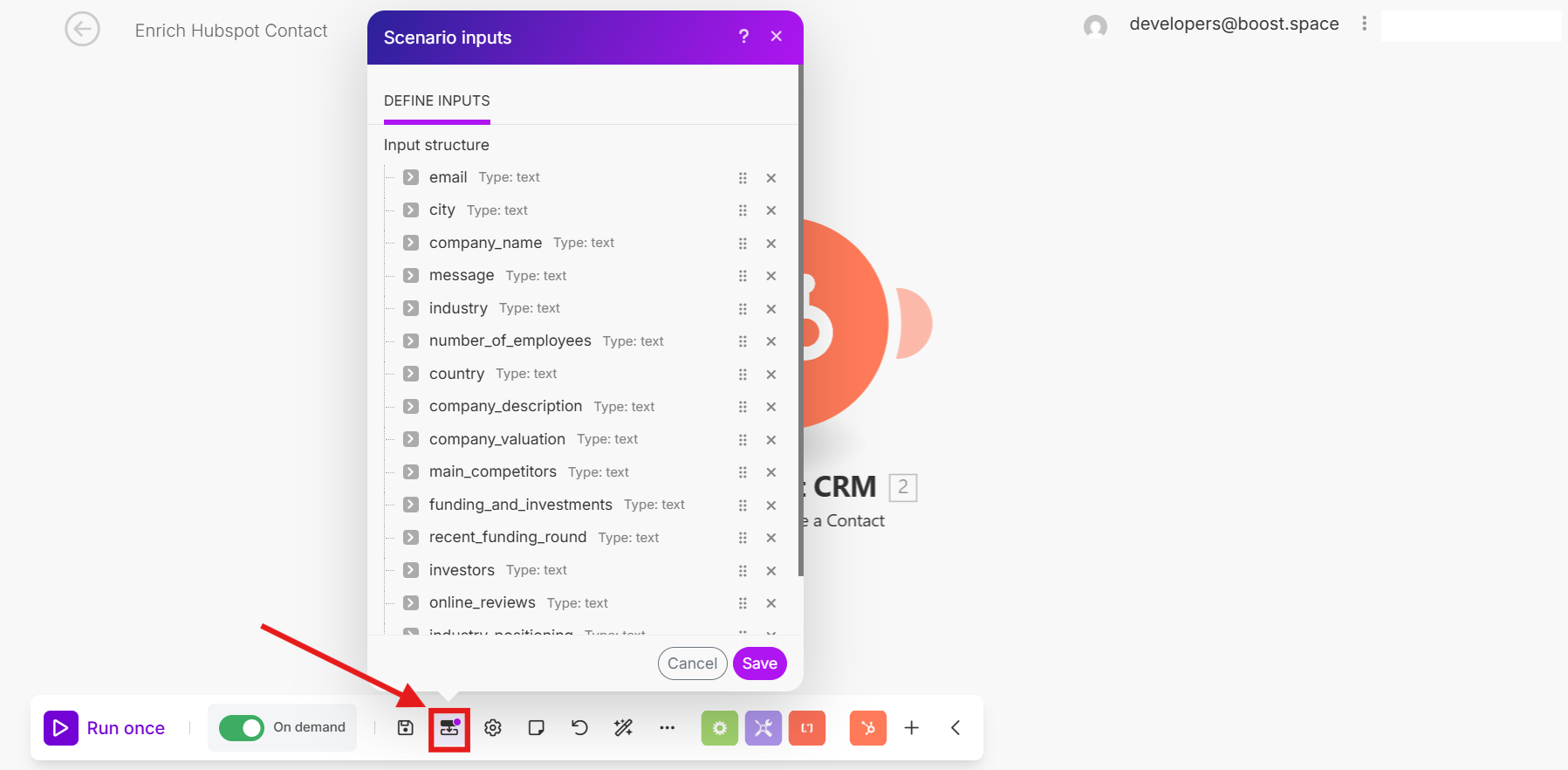
These inputs are created by you in the scenario editor
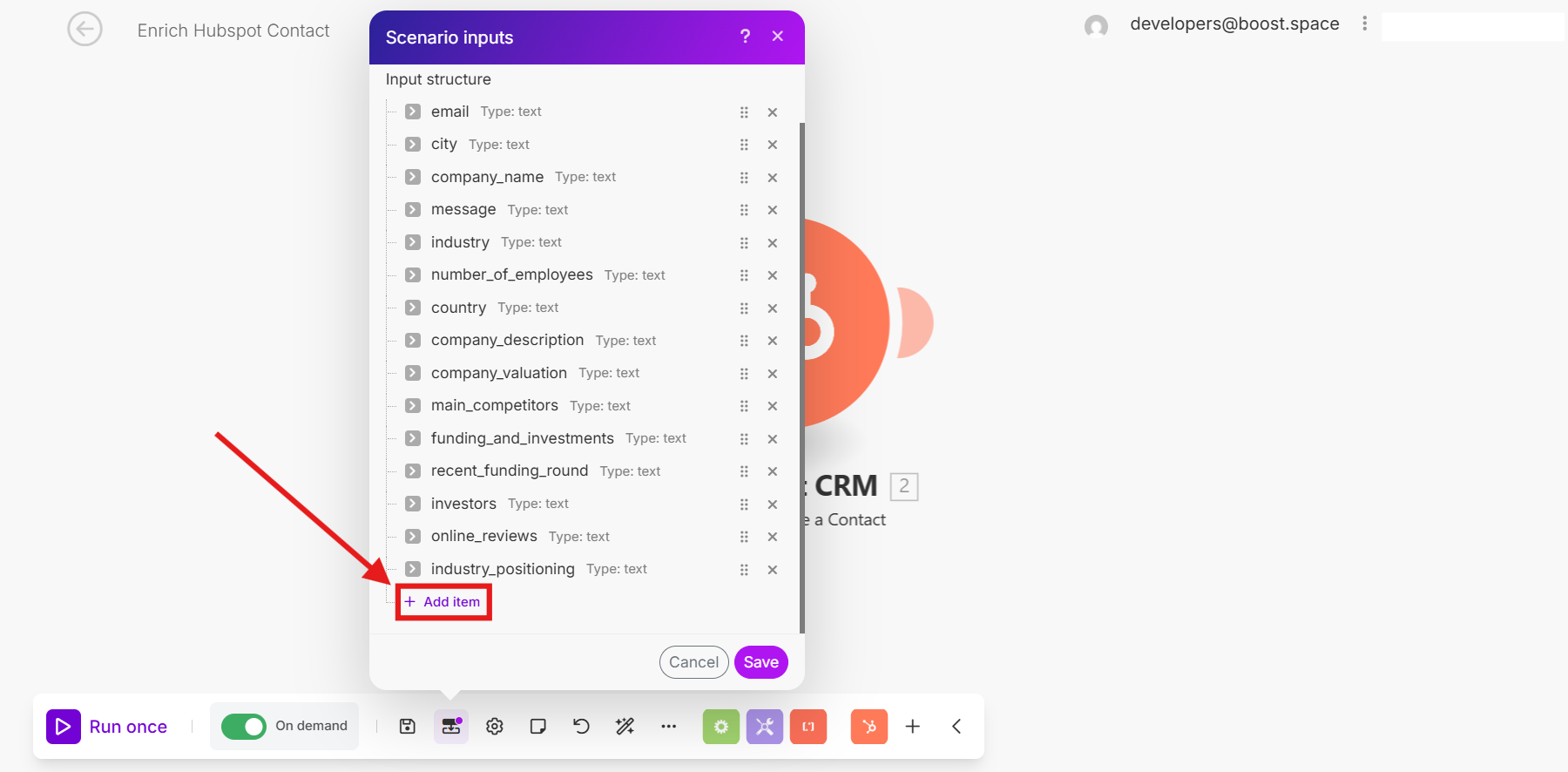
and mapped using the Scenario Inputs feature.
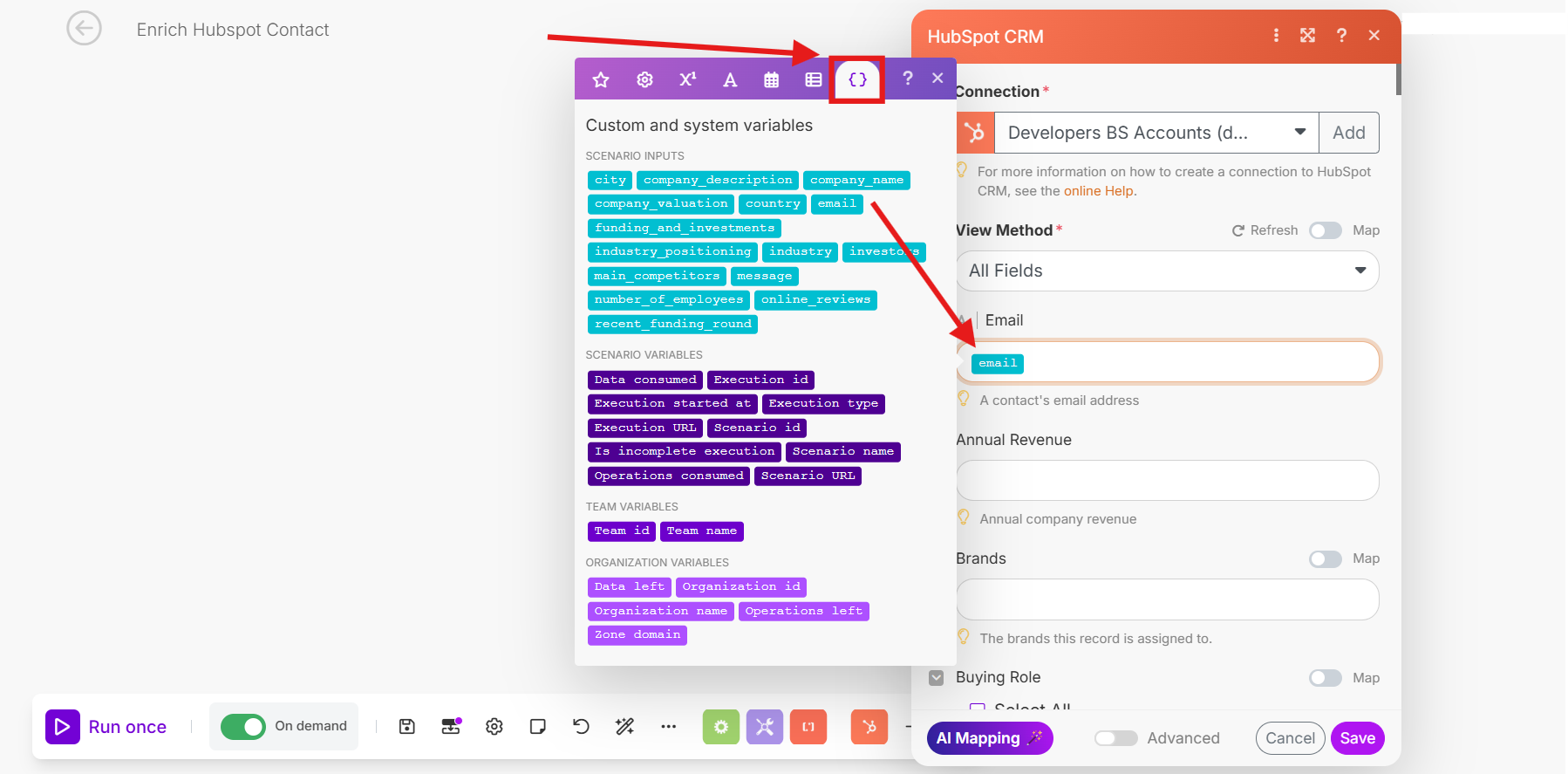
For example, let’s say you ask ChatGPT:
“Create the best offer for company X and send it via email.”
To complete this task, the scenario might require three inputs:
- The email address
- The subject line
- The bullet points of the offer
Once defined, the AI can dynamically fill in those inputs during the conversation and pass them directly to the scenario at runtime.
This enables a whole new layer of automation—letting your AI agent not only read and summarize your system’s data but also take action by triggering predefined processes with context-aware inputs.
With just a few simple steps, you can turn any AI agent into a powerful interface for working with your system—securely accessing data, answering questions, and triggering automated workflows. Ready to explore what’s possible?
If you still need to clarify anything, please reach out to us at [email protected].